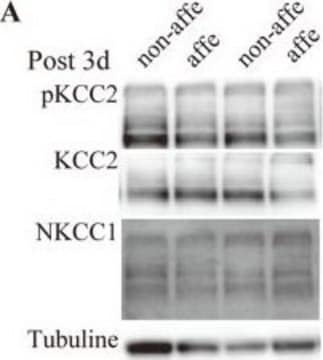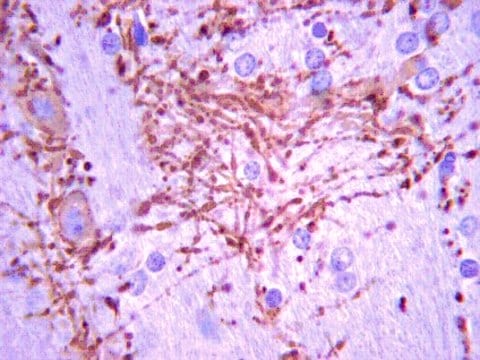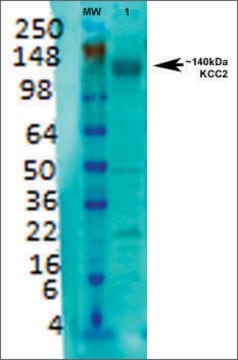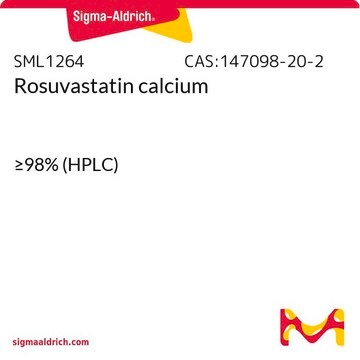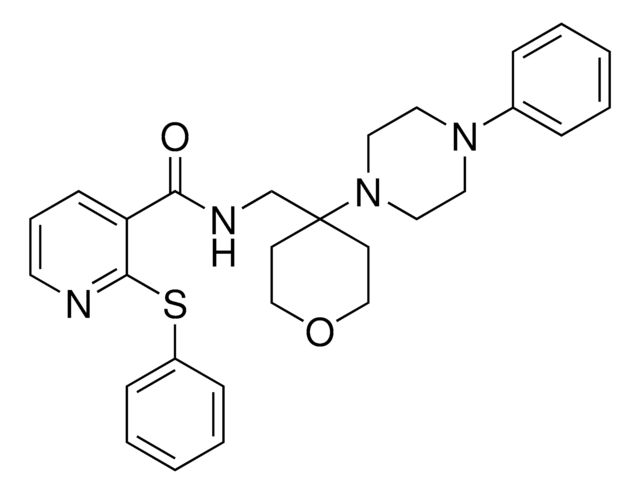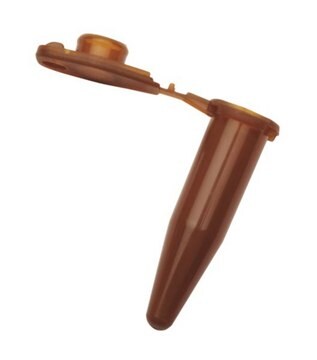C2366
Anti-K+/Cl- Cotransporter (KCC2) antibody produced in rabbit
IgG fraction of antiserum, buffered aqueous solution
Synonym(e):
Anti-DEE34, Anti-EIEE34, Anti-EIG14, Anti-KCC2, Anti-hKCC2
About This Item
Empfohlene Produkte
Biologische Quelle
rabbit
Qualitätsniveau
Konjugat
unconjugated
Antikörperform
IgG fraction of antiserum
Antikörper-Produkttyp
primary antibodies
Klon
polyclonal
Form
buffered aqueous solution
Speziesreaktivität
canine, rat
Methode(n)
western blot: 0.5-2.0 μg/mL using rat brain membrane preparation
UniProt-Hinterlegungsnummer
Versandbedingung
dry ice
Lagertemp.
−20°C
Posttranslationale Modifikation Target
unmodified
Angaben zum Gen
rat ... Slc12a5(171373)
Allgemeine Beschreibung
The cation-chloride cotransporters (CCCs) are glycoproteins involved in transport of ions, including chloride, across the cell membrane without an accompanying net charge movement; thus this type of transport is driven without the direct hydrolysis of ATP. The energy for the transport is derived from the cation gradient generated by the Na+/K+/ATPase. The CCCs also play a critical role in influencing GABA- and glycine-mediated signaling. Other transporters that participate in chloride homeostasis include Na+-dependent and Na+-independent anion exchangers, which exchange chloride for HCO3- ions
Three cotransporters belonging to this family include sodiumchloride( Na+/Cl-/ ) cotransporters (NCCs), sodiumpotassium-chloride (Na+/K+/2Cl-) cotransporters (NKCCs) and potassium-chloride (K+/Cl-) cotransporters (KCCs). K+/Cl- cotransporter (KCC2) is the major neuronal chloride transporter. It has been proposed to play a role in the modulation of neuronal responses to γ-aminobutyric acid (GABA). GABA-mediated fasthyperpolarizing inhibition depends on extrusion of chloride by KCC2 In conditions of neuronal damage, where neuronal excitability is increased, and in spinal cord in models of neuropathic pain, the expression of the KCC2 transporter is decreased
Spezifität
Immunogen
Anwendung
Immunocytochemistry (1 paper)
Zielbeschreibung
Haftungsausschluss
Sie haben nicht das passende Produkt gefunden?
Probieren Sie unser Produkt-Auswahlhilfe. aus.
Lagerklassenschlüssel
10 - Combustible liquids
WGK
WGK 1
Flammpunkt (°F)
Not applicable
Flammpunkt (°C)
Not applicable
Persönliche Schutzausrüstung
Eyeshields, Gloves, multi-purpose combination respirator cartridge (US)
Analysenzertifikate (COA)
Suchen Sie nach Analysenzertifikate (COA), indem Sie die Lot-/Chargennummer des Produkts eingeben. Lot- und Chargennummern sind auf dem Produktetikett hinter den Wörtern ‘Lot’ oder ‘Batch’ (Lot oder Charge) zu finden.
Besitzen Sie dieses Produkt bereits?
In der Dokumentenbibliothek finden Sie die Dokumentation zu den Produkten, die Sie kürzlich erworben haben.
Unser Team von Wissenschaftlern verfügt über Erfahrung in allen Forschungsbereichen einschließlich Life Science, Materialwissenschaften, chemischer Synthese, Chromatographie, Analytik und vielen mehr..
Setzen Sie sich mit dem technischen Dienst in Verbindung.